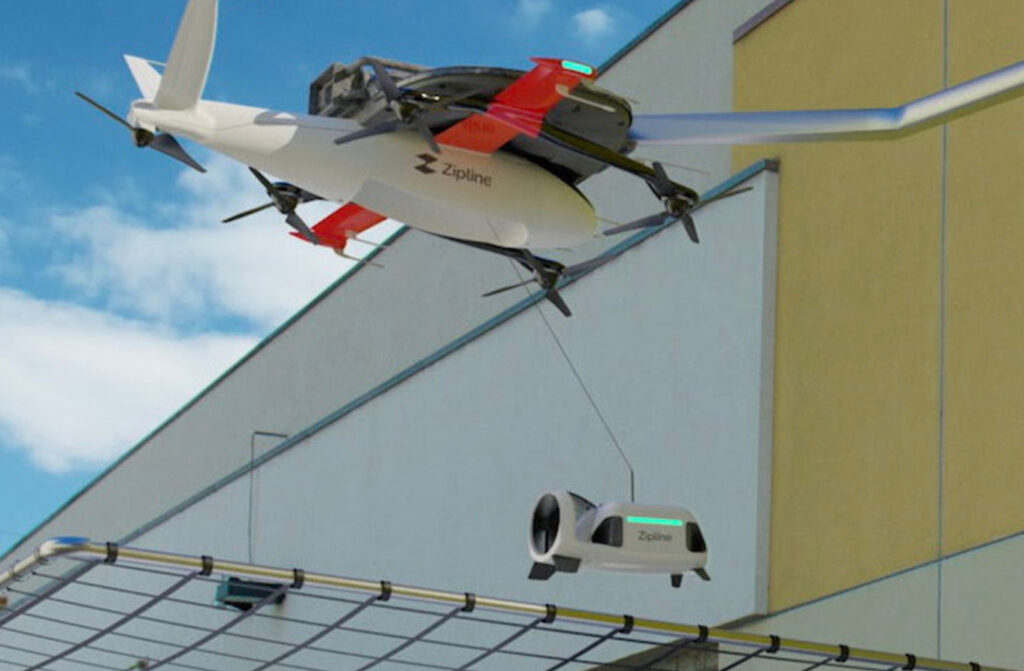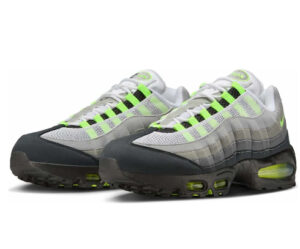Welcome to the New Skyway
While the world waits for the arrival of mass-market flying cars, Texas is quietly building a new kind of aerial future—one where autonomous drones zip through the skies with parcels, not passengers. And at the center of this revolution is Zipline, a San Francisco-based logistics startup whose quiet, efficient drone systems are rapidly reshaping last-mile delivery.
Zipline has officially launched operations in Mesquite, a suburban city east of Dallas, through a high-profile partnership with Walmart. The move positions Zipline not just as a disruptor in the retail sector, but as a leader in aerial infrastructure, environmental responsibility, and air traffic integration.
The P2 Platform: A New Blueprint for Drone Logistics
At the core of Zipline’s rollout in Texas is its Platform 2 (P2) drone system, an all-electric, autonomous aircraft capable of carrying up to 8 pounds of cargo over a 24-mile radius. It is designed for hyper-local delivery, offering Walmart customers access to over 65,000 items, from pantry goods and beauty supplies to medications and household essentials.
The system’s most notable feature is its modular dual-body delivery architecture:
- The primary drone (Zip) hovers silently 300 feet above the delivery point.
- It then deploys a tethered delivery droid, a small winged capsule equipped with sensors and thrusters.
- The Droid gently lowers itself, using real-time environmental scanning to land with pinpoint accuracy—even in narrow backyards or apartment balconies.
- It releases the package using a magnetic latch, then retracts cleanly into the drone, which returns autonomously to base.
This design is not just a feat of engineering—it is a response to urban complexity, noise regulation, and consumer trust.
All-Weather Capabilities and Quiet Precision
Operating in an environment as unpredictable as Texas demands robustness. The P2 drones are engineered for all-weather operation, including rain and sustained wind gusts up to 45 mph. This resilience ensures service continuity, unlike most traditional delivery drones that are grounded by inclement weather.
Equally significant is the drone’s low acoustic signature. With quieter motors and minimal hover time at drop-off points, Zipline addresses one of the most common community concerns around drone delivery: noise pollution.
Where early drone prototypes from competitors buzzed loudly overhead, Zipline’s aircraft barely register, bringing the promise of aerial logistics closer to social acceptability.
Safety and Air Traffic Integration
As Zipline expands its aerial network, safety is paramount. The company adheres to rigorous standards set by the Federal Aviation Administration (FAA), including:
- Full Beyond Visual Line of Sight (BVLOS) certification, enabling drones to operate without direct human observation.
- Integration into the FAA’s Unmanned Aircraft System Traffic Management (UTM) protocols for low-altitude airspace.
- Geo-fencing technologies that restrict drones from flying over schools, stadiums, or restricted airfields.
- Redundant flight systems, allowing drones to reroute, hover, or return to base in the event of mechanical failure or GPS signal loss.
In densely populated metro areas like Dallas-Fort Worth, airspace is already crowded with helicopters, fixed-wing aircraft, and commercial jet paths. Zipline’s system integrates with both manned and unmanned aviation via real-time data exchange platforms, reducing midair conflict risk and ensuring deconfliction in shared corridors.
Additionally, drones constantly share telemetry with ground-based air traffic monitors, allowing for coordinated flight paths that mimic those used in commercial aviation—albeit at a much lower altitude.
Ground-Level Safety Measures
Zipline also understands that safety doesn’t stop in the air. At the ground level:
- Each delivery droid uses LIDAR, barometric sensors, and infrared imaging to map safe landing zones, avoiding animals, children, vehicles, or other obstructions.
- The package latch includes tamper-resistant magnetic locks and temperature-sensitive enclosures for time- or heat-sensitive goods like medication or food.
- Customers receive real-time text and app notifications of delivery timing, including a visual GPS map and video preview of the drop site.
This level of micro-precision elevates Zipline above traditional drop-from-the-sky models that often result in packages stuck in trees, rooftops, or inaccessible yards.
Retail Logistics Reimagined
Zipline’s partnership with Walmart is not a novelty—it’s a strategic pivot. While other retailers continue to expand delivery fleets by road, Zipline leapfrogs terrestrial logistics entirely, offering:
- 30-minute average delivery times, even during rush hour.
- No emissions, thanks to all-electric propulsion.
- A dramatically reduced last-mile delivery cost, which accounts for up to 53% of traditional delivery expenditures.
Walmart now utilizes rooftop drone ports at select fulfillment centers, where drones are autonomously dispatched, recharged, and loaded by robotic arms and software-guided systems. This means zero human handling from dispatch to drop, a model that’s redefining what scalability looks like in modern retail.
Competitive Skyspace: Who Else Is Flying?
While Zipline leads in technical innovation and flight mileage, the drone delivery race includes several other major players:
- Wing (Alphabet/Google): With over 75,000 completed deliveries in the Dallas suburbs, Wing specializes in food and pharmacy items and operates from portable launchpads stationed on rooftops or parking lots.
- Flytrex (Israel/US): Known for high-frequency food drops, Flytrex has partnered with local restaurants and executed over 100,000 flights in North Carolina and Texas.
- Amazon Prime Air: Still in limited rollout, Amazon’s drone program is focused on heavier payloads and automated fulfillment, currently in pilot phases across California and Texas.
- UPS Flight Forward: Concentrated on healthcare logistics, UPS’s drone division has received FAA Part 135 certification and focuses on inter-campus and hospital network deliveries.
Despite the crowded field, Zipline remains unmatched in flight mileage, recently surpassing 100 million autonomous miles flown—a critical threshold that adds weight to its safety record, system reliability, and operational maturity.
Health and Humanitarian Roots
What distinguishes Zipline is not just its technology—but its origin story. Founded in 2016, the company began as a humanitarian aid project in Rwanda, delivering critical medical supplies like blood and vaccines to hard-to-reach rural hospitals. Its fixed-wing P1 aircraft—still in use across Africa—has flown over 120 miles per trip, operating successfully in Ghana, Nigeria, and Kenya.
This foundation gave Zipline operational resilience, real-world engineering credibility, and deep insight into high-stakes delivery environments. It also aligned the company’s mission with social impact, not just market domination.
In the U.S., Zipline continues this legacy by partnering with hospital networks and pharmacies for chronic medication delivery, ensuring access for elderly or mobility-impaired patients in both urban and rural areas.
Public Trust and Regulatory Hurdles
As drone delivery becomes more visible, so do questions around privacy, surveillance, and accountability. Zipline addresses these concerns with:
- End-to-end encryption of flight data and delivery logs.
- No onboard cameras, except for landing guidance systems, ensuring no aerial footage is stored or shared.
- Strict opt-in policies for video capture (for those who want to see delivery footage).
- Regular public information sessions, hosted in local municipalities to answer questions and receive feedback.
On the federal side, the FAA continues to evolve its guidelines, working alongside NASA and private sector partners like Zipline to build the framework for national drone traffic control. These policies include:
- Corridor zoning for low-altitude drone lanes.
- Identification protocols for drone registration and telemetry broadcasting.
- Certification for drone operators, even in autonomous environments.
In short, the sky is getting busier—but it’s also becoming smarter.
Looking Ahead: The Next Evolution in Urban Air Logistics
What Zipline is building in Texas is not just a service—it’s an ecosystem. An interconnected mesh of:
- Distribution hubs, adapted from retail rooftops.
- Flight corridors, maintained through cloud-based airspace maps.
- Hardware, designed for weather, distance, and accuracy.
- Software, linking commerce, logistics, and geography.
And as more cities embrace aerial delivery, the infrastructure now being tested in places like Mesquite could become a national model—turning suburban skies into sustainable arteries for consumer connection.
Impression
Zipline’s drone delivery initiative in Texas marks a turning point in how we think about logistics. It’s no longer just about faster shipping or reducing fuel costs. It’s about redesigning urban airspace, trusting autonomy, and building infrastructure that scales quietly and cleanly.
With partners like Walmart and a growing list of municipal regulators, Zipline’s vision is becoming reality—one zip, drop, and return at a time.
This isn’t just about what’s next. It’s about what’s already here—hovering just above us, arriving within 30 minutes, and redefining the boundaries of how we live, shop, and move through the world.
No comments yet.







